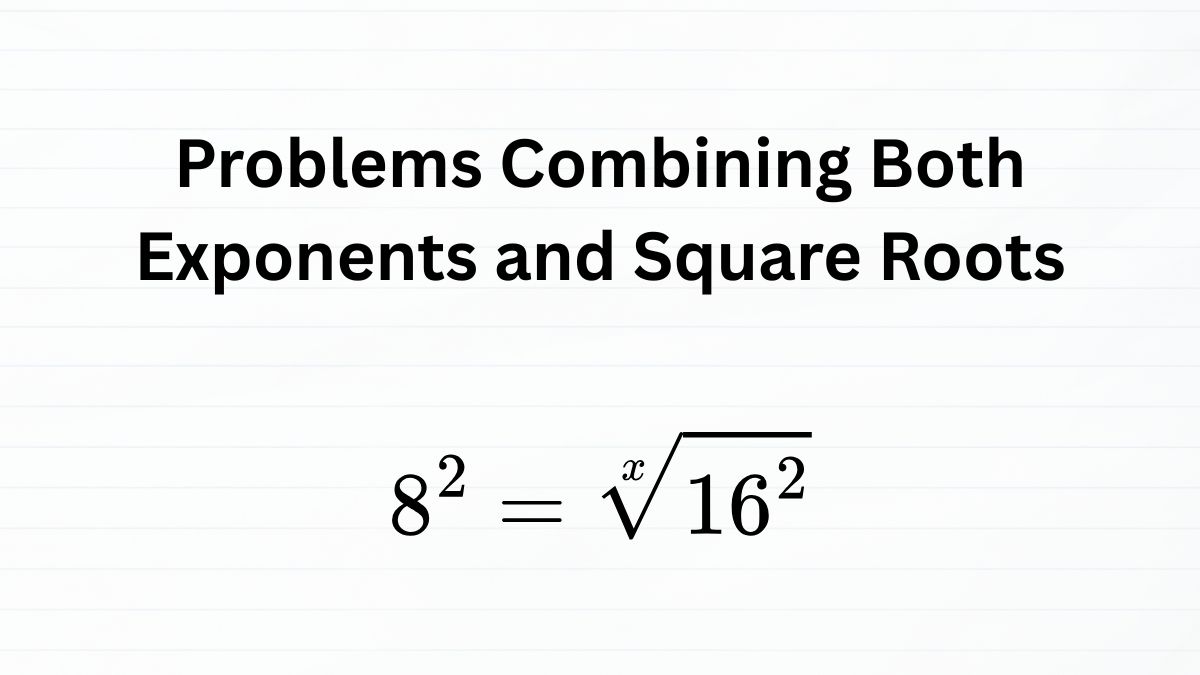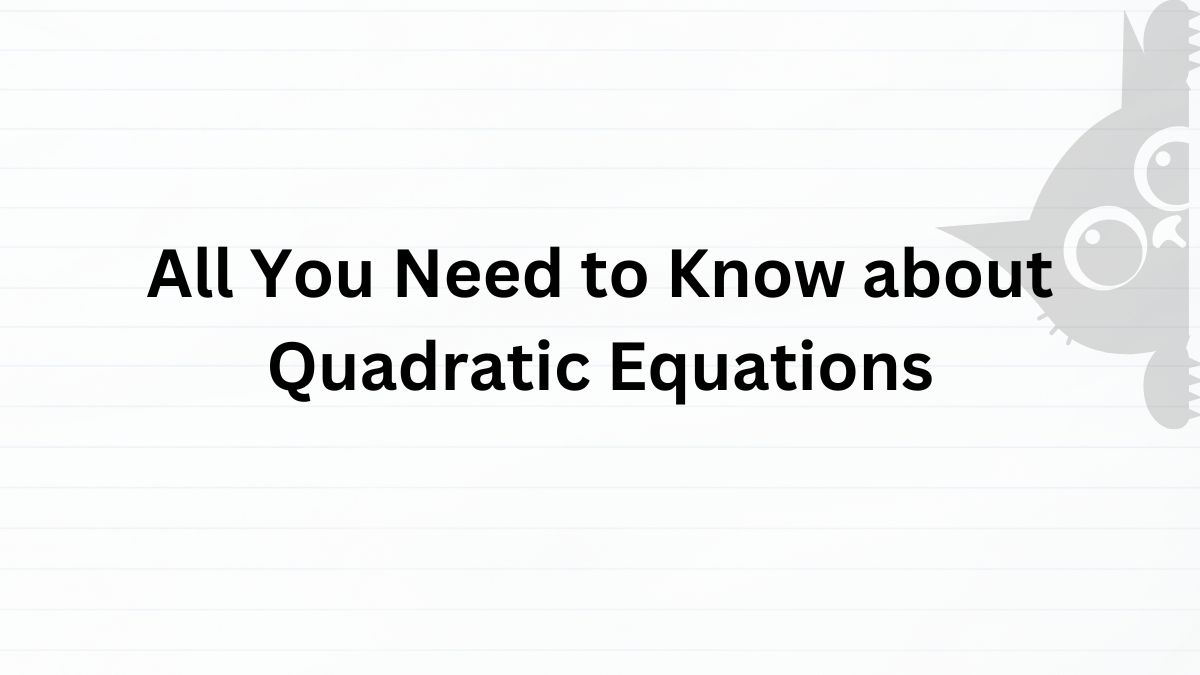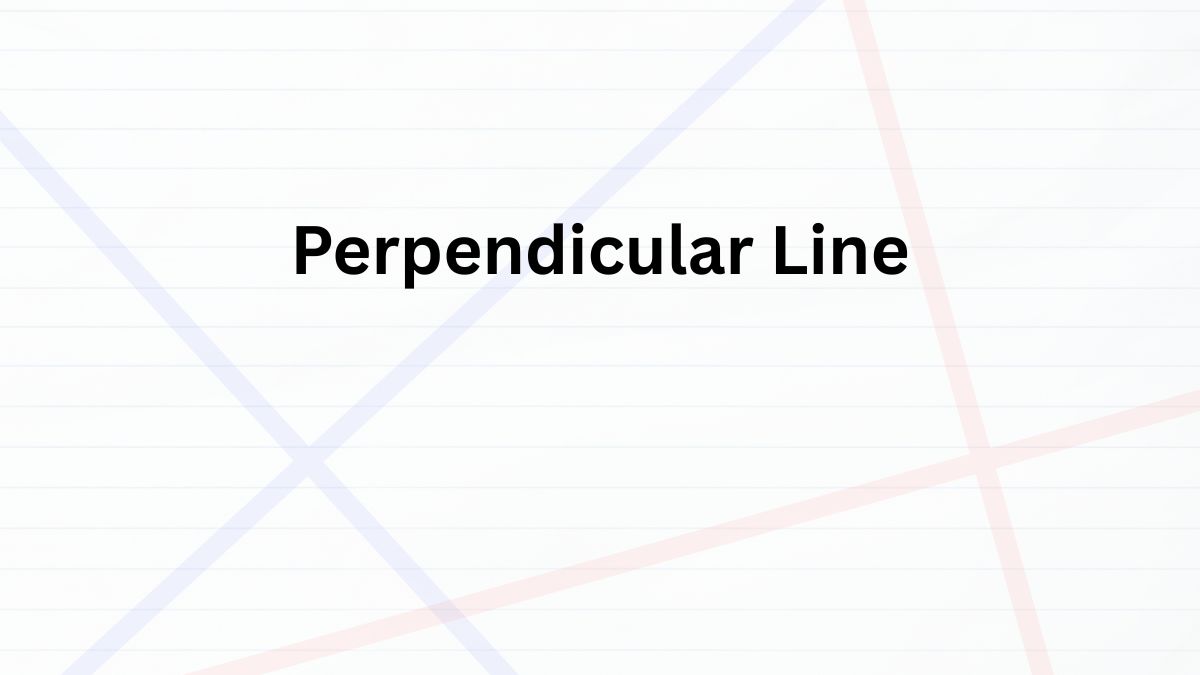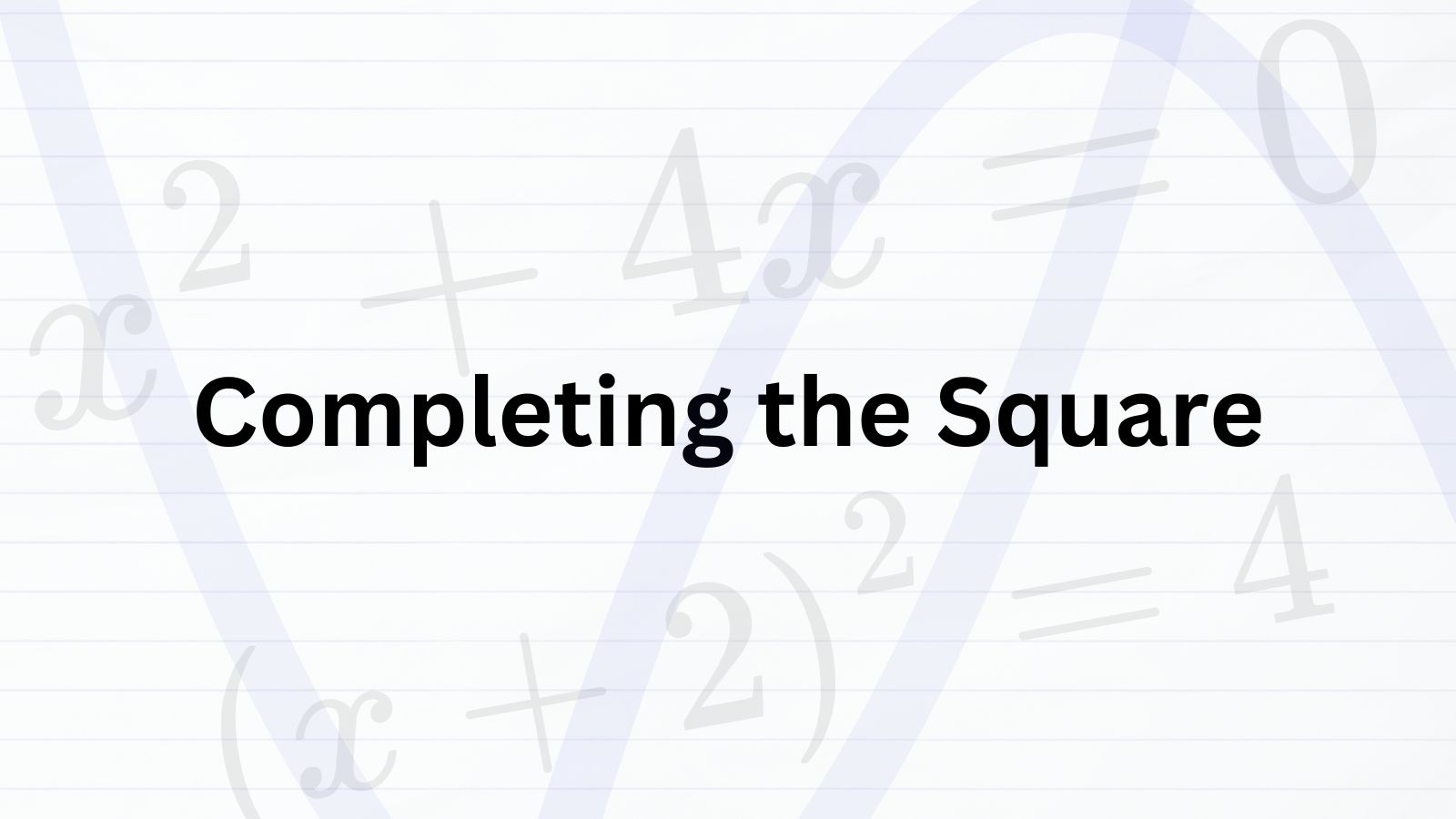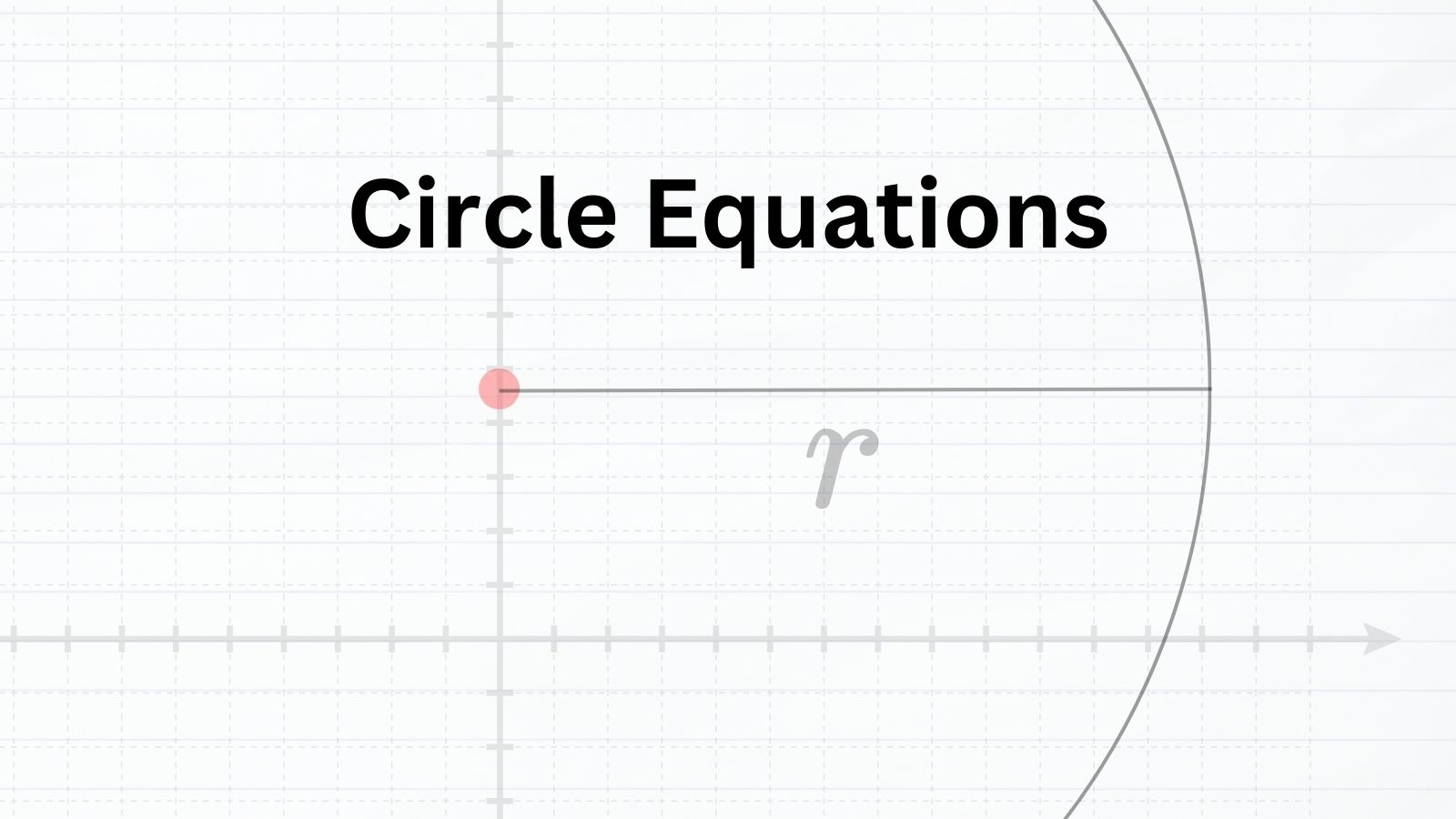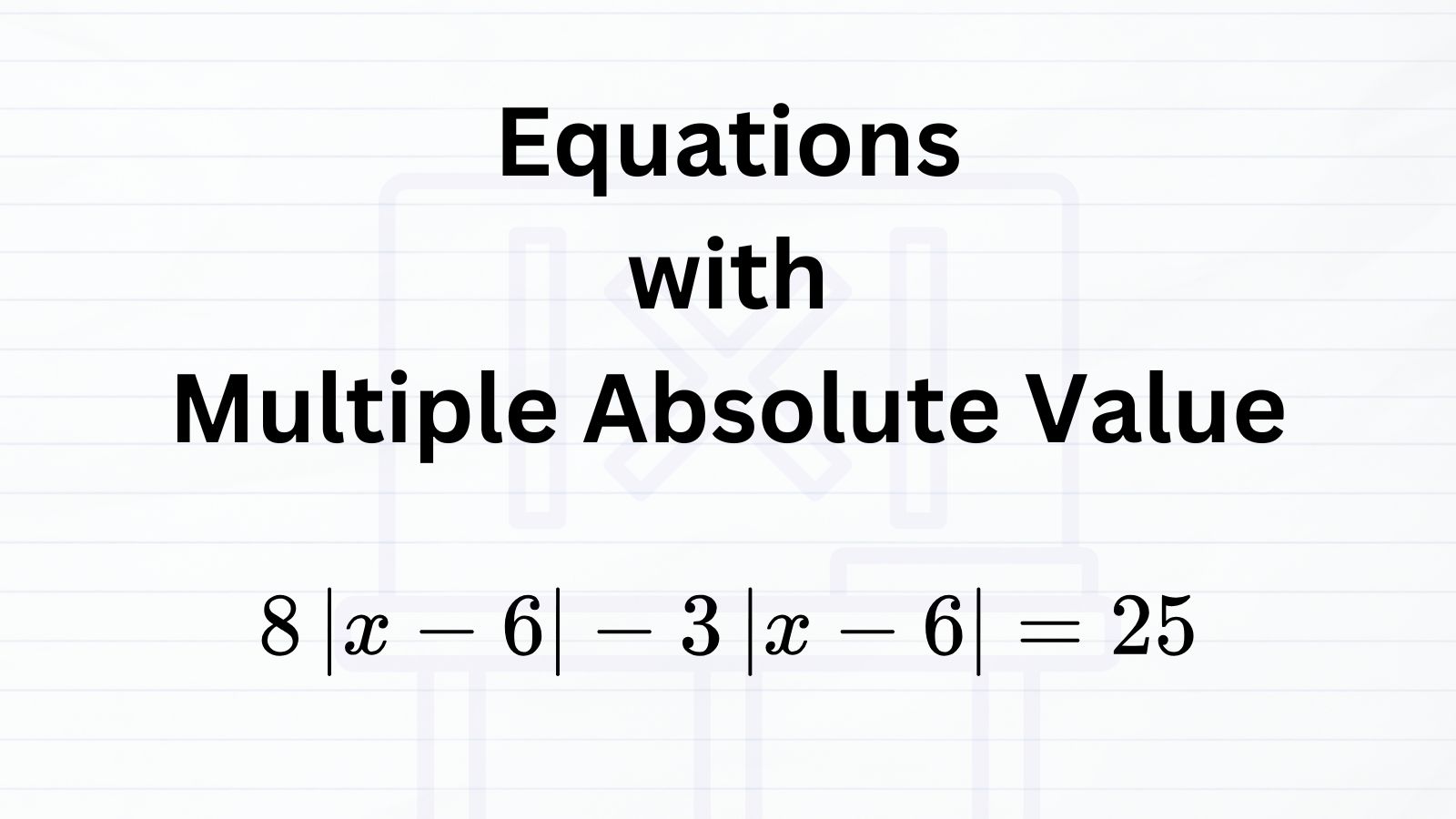
How to Solve Equations with Multiple Absolute Values
Table of Contents
When solving SAT Math problems, absolute value equations can sometimes feel tricky. But when the equation contains two or more absolute value expressions, things can become even more confusing.
The good news is that there’s a clear step-by-step way to handle these questions, because SAT questions only follow a certain question pattern.
Review of Absolute Value

The absolute value of a number tells us how far that number is from zero on the number line. For example,
- \(|5| = 5\) because 5 is five units away from zero.
- \(|-5| = 5\) because \(-5\) is also five units away from zero, thought it is in the opposite direction.
In the end, absolute value always gives a positive result. To make this work, we follow a simple rule when removing the bars.
How to Remove Absolute Value Bars
For a positive integer \(a\),
- If the number inside absolute value bars is already positive, drop the bars: \(|a| = a\).
- If the number inside absolute value bars is negative, take away the bars and change its sign: \(-1\). \(|-a| = -(-a) = a\).
That way, no matter what number we start with, the outcome is always non-negative.
Equations with Multiple Absolute Values
If an absolute value expression is simple, there’s not much to worry about, just check whether the term inside the bars is positive or negative. But what happens if an equation contains more than one absolute value?
For example,
\(4|2 + x| – 3|2 + x| = 8\)
When multiple absolute values appear in the same equation, the SAT usually keeps them simple by making the expressions inside the bars identical. Without this setup, the problems would become too complicated and time-consuming, which doesn’t fit the purpose of the test.
The SAT is designed to measure your reasoning skills under strict time limits, not to trap you with overly technical algebra. That’s why questions involving absolute values are written in a way that can be solved logically within a few steps.
So, let’s go through how to solve this kind of question step by step.
Steps to Solve Equations with Multiple Absolute Values on the SAT
Use the following steps to handle this question type efficiently:
- Look for identical absolute-value expressions.
- Replace every identical expression with a single variable (for example, let \(a = |2 + x|\).
- Solve the resulting equation for that variable \(a\).
- Substitute back to solve the remaining single absolute value for \(x\).
Let’s see how these steps work using the equation:
\(4|2 + x| – 3|2 + x| = 8\)
Step 1. Identify the identical absolute-value terms
In this equation, the same absolute value \(|2 + x|\) appears more than once.
Step 2. Substitute with a simple variable
We’ll set \(a = |2 + x|\) to make the calculation easier. The, we can rewrite the equation as follows.
\(4a – 3a = 8\)
Step 3. Solve the equation
Since both \(4a\) and \(-3a\) involve the same variable \(a\), we can combine the terms.
\(a = 8\)
Step 4. Substitute the original absolute value
Now substitute back \(a = |2 + x|\).
\(|2 + x| = 8\)
Remember that when an absolute value contains a variable, you must consider two cases: the inside of the bars being positive or negative.
- Case 1: When \(2 + x = 8\)
Since the expression inside the bars equals 8, which is already positive, we can simply remove the absolute value bars:
\(|2 + x| = 8\)
\(2 + x = 8\)
\(x = 6\)
Therefore, one solution for \(x\) is 6.
- Case 2: When (2 + x = -8)
By definition, an absolute value is always non-negative:
Rule of Absolute Value
\(|A|=\begin{cases}A & if A \geq0\\-A & ifA<0\end{cases}\)
This time, since \(2 + x = -8\) is negative, we apply the second case in the above rule.
\(|2 + x| = 8\), where \(x < 0\).
\(-1(2 + x) = 8\)
\(-2 -x = 8\)
\(x = -10\)
Therefore, the second solution is \(x = -10\).
Thus, for the equation \(4|2 + x| – 3|2 + x| = 8\), the solutions are \(x = 6\) or \(x = -10\).
Practice Questions
Question 1
Explanation
Since this equation has two identical absolute values, we can use the following steps to solve for \(x\).
Steps to Solve Equations with Multiple Absolute Values on the SAT
Use the following steps to handle this question type efficiently:
- Look for identical absolute-value expressions.
- Replace every identical expression with a single variable (for example, let \(a = |x – 4|\).
- Solve the resulting equation for that variable \(a\).
- Substitute back to solve the remaining single absolute value for \(x\).
For the equation, \(5|x-4|-2|x-4|=12\), we’ll let \(a = |x – 4|\) to make the calculation simpler.
\(5a -2a = 12\)
\(3a = 12\)
Divide both sides by 3.
\(a = 4\)
Next, substitute back \(a = |x – 4|\).
\(|x-4|=4\)
Since the absolute value contains a variable, we must consider two cases: \(x-4 = 4\) and \(x -4 = -4\).
- When \(x – 4 = 4\):
We know that \(x – 4 > 0\), so we can simply remove the absolute value bars.
\(|x-4| = 4\)
\(x – 4 = 4\)
\(x = 8\)
So, one of the solutions is 8.
- When \(x – 4 = -4\)
This time, \(x – 5 < 0\), so we need to multiply \(x-4\) by \(-1\) to maintain the absolute value to be non-negative.
\(|x-4| = 4\)
\(-(x-4) = 4\)
\(-x + 4 = 4\)
\(x = 0\)
Question 2
Explanation
We are asked to solve the equation: \(9|x-1|-5|x-1|+2|x-1|=12\).
Notice that all the terms involve \(|x-1|\). To make the equation cleaner, let’s set \(|x – 1| = a\). This allows us to rewrite the equation:
\(9a -5a +2a = 12\)
Combine like terms.
\(6a = 12\)
\(a = 2\)
Now, substitute back \(|x-1|\) with \(a\).
\(|x – 1| = 2\)
Because the absolute value involves a variable, we must split it into two cases: when \(x – 1 = 2\) and when \(x – 1 = -2\).
- If \(x – 1 = 2\)
\(x – 1 = 2\)
\(x = 3\)
- If \(x – 1 = -2\):
\(x – 1 = -2\)
\(x = -1\)
The solutions to the equation are \(x = 3\) and \(x = -1\).



